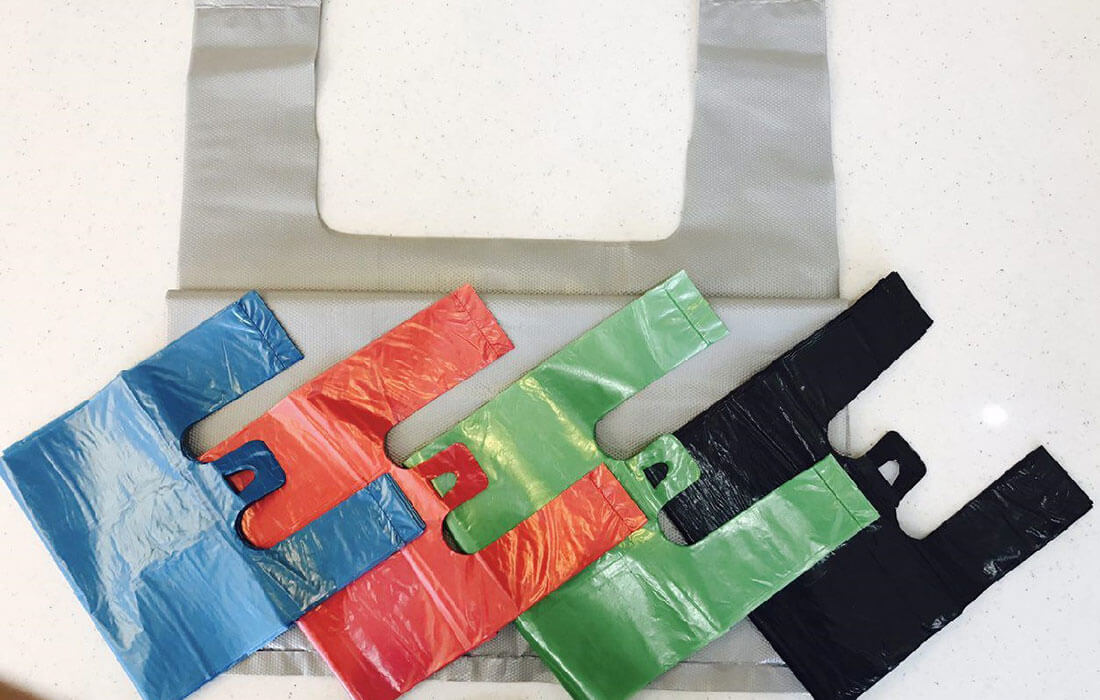Nylon is actually an example of a combined polymer and polyamide. Polyethylene has high impact and chemical resistance and has good flexibility. It is insoluble at room temperature and its solubility is only done by heating in hydrocarbons or halogenated hydrocarbons. It does not oxidize easily and has a relatively low melting temperature.
Good processability, high impact and chemical resistance, as well as electrical insulation, have made nylon to be used more for packaging, food coating, protective films in construction applications, clothing, moisture insulation, greenhouses, etc.
Nylons are usually semi-crystalline and very hard materials that exist in different grades. Nylons can be mixed with fillers such as glass or oil to enhance certain aspects of their performance.
In our country, Nylex is the same heavy polyethylene film that is mostly used in the form of store-bought plastic. Of course, the constituent materials of Nylex are often not only heavy polyethylene, but at least 80% of its constituent materials are heavy polyethylene and the rest is light polyethylene, the reason for using this 20% is its shiny properties, better sewability and softness of Nylex. And as for cellophane, the mentality of the general public about the word cellophane is a wrong and non-specialist mentality. Among people, cellophane is mistakenly referred to as two types of plastic, one of which is nylon stretch packaging and the other is food packaging plastic. The term cellophane has two different meanings in the Iranian market and the world market. Basically, polymer films are divided into three categories: natural, artificial and synthetic polymers. In the domestic market, cellophane is produced from transparent and glass films based on polypropylene, and the production method of this product is that after the molten material exits the mold of the device, the molten material is cooled with the help of cold water and then it is made into an amorphous state. they convert Production of cellophane through polypropylene is a costly process and the product obtained from this method may turn yellow after a while.
Cellophane’s low permeability to air, oils, greases, bacteria and water makes it an excellent choice for food packaging. Cellophane films are used in transparent packaging of food, dry fruits and flowers, table and chair covers, and book covers.
Application of nylon
If we want to consider only the polyethylene industry, nylon is widely used in many businesses and industries, and we all deal with it every day, from clothing stores that use printed plastic handles to deliver products to customers, to packaging. The ones we see in food and product stores use this type of packaging.
Types of nylon
Greenhouse nylons
Legume nylon
Nylon shearing
Printed nylon with straps
Bubble wrap
Properties of nylon
Features of nylon
luxurious
Excellent elasticity
too strong
Resistant to oil and many chemicals
Acceptable elasticity
No water penetration
Quick drying
Application of Nylex
As we said earlier, Nylex has a dry and matte material, of course, it also has high resistance, therefore it is used in most plastic bags with handles, garbage bags, fruit and tarbar plastics, and in general in any bag where the appearance is important. and must bear high weight, Nylex is used.
Types of Nylex
Disposable tablecloth
Roll garbage bag
Carry store nylons
freezer bag
Nylex printed pedals
single-use glove
But the difference between Nylex and Nylon
In Iran, the words Nylon and Nylex have differences that do not exist in other countries. The difference between nylon and nylex is in the raw materials used in their production and appearance. The main difference between nylon and nylon is in their ingredients. It means that their raw materials are different. Nylon material is made of light polyethylene while nylon raw material is made of heavy polyethylene unlike nylon.
The first difference between nylon and nylex in appearance is that nylon is transparent, shiny and soft, but nylex is dry and matte, and in production, nylex can be produced with very little thickness and extremely thin, the number of each sheet in one kilo is high, but For nylon, it is not possible to produce thin material so easily.
Nylon refers to products made of light polyethylene and Nylex refers to products made of heavy polyethylene. Cellophane is also transparent and glass films that are made of polypropylene.
Nylon and Nylex lies in their appearance. While nylon products have a shiny appearance, Nylex products are relatively matte. In terms of printing, glossy printing is used for nylon products because the result looks more beautiful. But in printing on Nylex products, due to their dullness, there is not much difference between PVC and glossy printing, however, PVC printing is more economical.
A simple way to differentiate between nylon and nylex is that nylon makes a small noise when crumpled, while nylex makes a hissing sound.
Cellophane is a product that can be used more than nylon and nylex due to its high temperature range.
In this article, we learned about “what is the difference between nylon and nylon” and “their ingredients” and “their type” and “their performance” as well as “the similarity between nylon and nylon”. Briefly explained about the types of nylon and their specialization. This is a general information for you to understand what nylon is and what it is used for.



